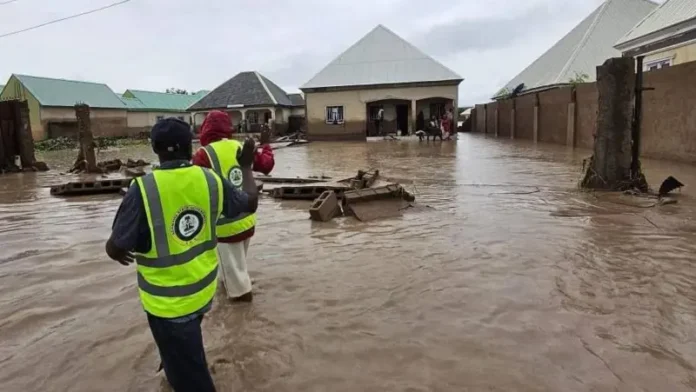It’s a grim reminder of the relentless challenges faced by communities in Nigeria. In a truly devastating turn of events, flash floods in Adamawa State have claimed the lives of at least 23 people and left thousands more utterly homeless. The UN humanitarian agency (OCHA) delivered this heartbreaking news on Tuesday, adding that a further 11 people are still missing, leaving families gripped by agonizing uncertainty.
Can you feel the despair, the sudden loss, the sheer chaos that must have engulfed these communities? This isn’t just a weather event; it’s a human tragedy, a recurring nightmare that highlights Nigeria’s vulnerability to climate impacts and infrastructure weaknesses.
A Sudden Onslaught: Communities Submerged, Lives Displaced
The deluge began on Sunday, unleashing its fury on five communities within the Yola area of Adamawa State. The speed and intensity of flash floods mean little warning, turning peaceful neighborhoods into raging torrents in mere moments.
According to the National Emergency Management Agency (NEMA), this sudden onslaught has so far displaced a staggering 5,560 people. Imagine having your home, your belongings, your entire life swept away in an instant, forced to flee with nothing but the clothes on your back.
In response to the crisis, a camp for those uprooted has been swiftly set up at Aliyu Musdafa College in Yola. NEMA confirmed that essential basic materials have been provided, offering a glimmer of relief to those who have lost everything. The agency also highlighted the crucial role of collaborative efforts: “The presence of both governmental and non-governmental partners have been significant, contributing to the effective management of the humanitarian situation.” This coordinated response is vital in times of such immense need.
The United Nations humanitarian affairs agency, OCHA, further detailed the immediate impact, reporting that dozens of people were injured as several neighborhoods in Yola, the capital of the northeastern state, were submerged on Sunday. OCHA also issued a critical warning to citizens: “of further rainfall and urging residents in flood-prone areas to move to higher ground.” This underscores the ongoing threat and the need for proactive measures to save lives.
A Recurring Nightmare: Floods in Nigeria
This tragic incident in Adamawa is unfortunately not an isolated event. It’s a painful chapter in Nigeria’s ongoing struggle with annual flooding. Heavy rains typically lash Nigeria between June and November, triggering floods that are often exacerbated by weak infrastructure and poor drainage systems across Africa’s most populous country. It’s a cycle that repeats year after year, causing widespread devastation.
The numbers are grim: more than 200 people have been killed in floods in Nigeria since the start of the rainy season in May this year alone. Most of these fatalities have occurred in the north-central Niger State, but Adamawa’s recent tragedy adds to the escalating toll.
This persistent problem points to a critical need for long-term solutions: robust drainage systems, improved urban planning, early warning systems, and effective disaster preparedness. While humanitarian aid is crucial in the immediate aftermath, the underlying vulnerabilities must be addressed to break this devastating cycle.
Our hearts go out to the victims, their families, and all those affected by the flash floods in Adamawa. May the missing be found, and may the displaced find solace and support as they begin the arduous process of rebuilding their lives. This tragedy serves as a powerful call for sustained action to protect Nigeria’s vulnerable communities from the relentless force of nature.


